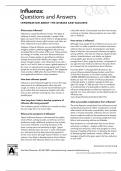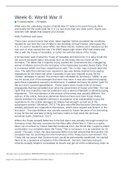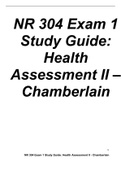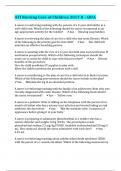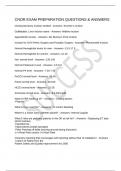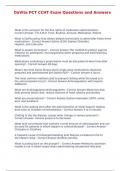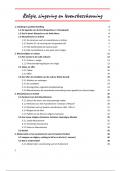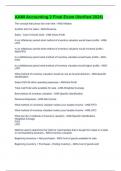Exam (elaborations)
information about the disease and vaccines
- Course
- Institution
Influenza: Questions and Answers information about the disease and vaccines What causes influenza? Influenza is caused by influenza viruses. Two types of influenza, A and B, cause outbreaks in people. Both types can cause mild to severe illness in all age groups. While influenza A vir...
[Show more]
